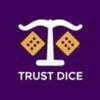Do card counters today stand a chance against automatic card shuffling machines? Mel B.
Card counters, Mel, have a theoretical advantage of between 0.5 and 1.5 percent against the casino. They accomplish this edge by tracking the ever-changing imbalance of big to small cards in a diminishing deck.
Big cards (10s, aces) favor the counter, and small cards (2-6), favor the dealer.
So, when the cards remaining favor the counter, the counter chunks out more money. When they favor the dealer, a the chunker chunks less.
The simplest count to learn is a one level count, also known as the Hi-Lo counting system. It assigns the following count values to each card.
2, 3, 4, 5, 6 (small cards)…………………. +1
7, 8, 9 (neutral cards)……………………… 0
10, J, Q, K, Ace (big cards)………………. -1
To use this Hi-Lo method, a player would need to add and subtract the above counting values for every card exposed on the blackjack table and keep an updated running count from one hand to the next. The counter then varies their bets according to the positive/negative value of the upcoming hand.
Is it easy to count cards? Yes, surprising so, and with a little practice, anybody can learn the Hi-Lo system. Except, Mel, the casino won’t be too pleased with a card counter who now knows how to beat them at their own game.
Casinos utilize an assortment of countermeasures they utilize to offset a counter’s advantage. The defense that hinders skilled card counters the most is the automatic card shuffling machine. These devices protect against counting because not only are cards shuffled internally inside a machine, but most continually shuffle cards between hands, thereby, eliminating any possibility of meaningful card counting.
Unfortunately, Mel, these auto shufflers hurt the average Joe or Josephine as well as impede card counters.
With a constant shuffle machine, dealers do not waste time manually shuffling cards, and they can, therefor, maximize the number of hands dealt per hour. From the casino’s perspective, shuffling is time, and time is money. The more hands dealt per hour, the faster the built-in casino advantage works in their favor.
From a player’s perspective, Mel, speed kills in a casino environment. The longer you become exposed to the casino edge, the more it wipes out your bankroll.
If one were to play perfect basic strategy at blackjack, who ends up winning more hands, the player or the house? Bill H.
Anytime you team up perfect basic strategy with premium hands like blackjacks, splits, and double downs, it gives you a fighting chance against the house. But, it is still not enough to quantify more winning hands than losing ones?
Sorry, Bill, the answer is no, especially over the long run.
Here’s the arithmetic. Minus pushes, the house wins roughly 48 percent of the hands played, and the player wins about 44 percent. The biggest reason why this win/loss differential favors the house is because the player has to act on his or her hand first, and the dealer plays last.
The variance of 48 percent lost, and 44 percent won, is exploited with perfect basic strategy and quality hands, which reduces the house to a mere 0.05% edge against your play.
Gambling Wisdom of the Week: “Yes, risk taking is inherently failure-prone. Otherwise, it would be called sure-thing-taking.” ~Tim McMahon




















